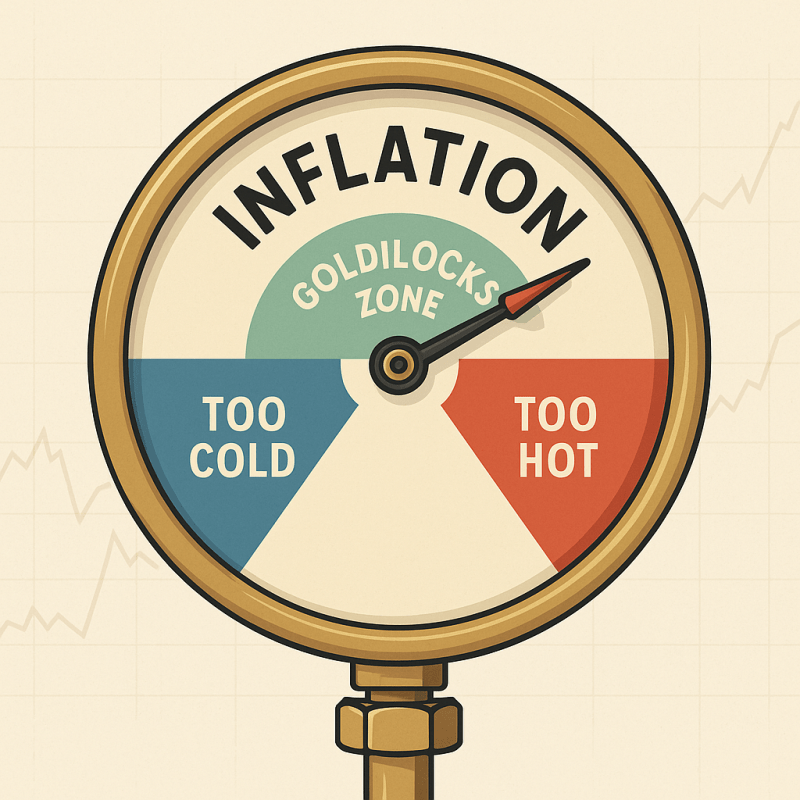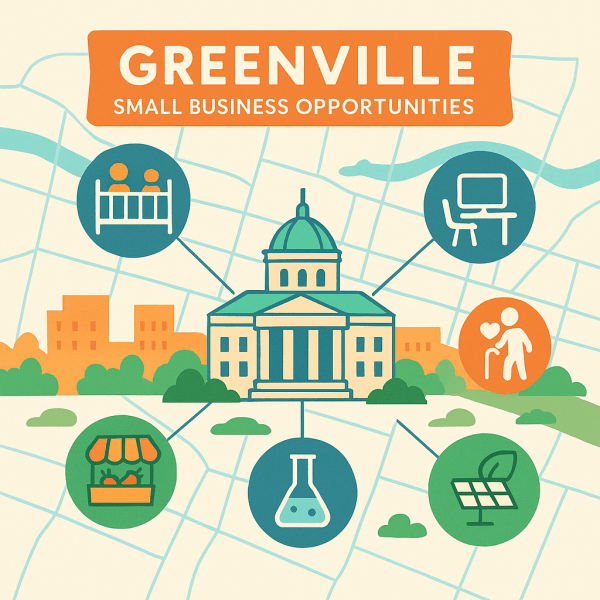
1. What Exactly Is Inflation?
At its simplest, inflation is a sustained, broad-based rise in the general price level, meaning that each unit of currency buys fewer goods and services than before. Central banks monitor it through indexes such as the U.S. Consumer Price Index (CPI) and the Personal Consumption Expenditures (PCE) price index. In May 2025, for instance, the U.S. CPI stood 2.4 percent higher than a year earlier, a far cry from the 9.1 percent peak recorded in June 2022 but still above the 1.7 percent average that prevailed in the 2010s. bls.govbls.gov
Because virtually every modern transaction is denominated in money, inflation reaches into wages, savings, taxes, interest rates, business contracts, and the political arena. To judge whether it is “good” or “bad,” we need to understand why our monetary system produces inflation at all, how different degrees of inflation reshape economies, and why policymakers deliberately aim for some inflation but do everything in their power to avoid too much.
2. Why Does Our Monetary System Tend Toward Inflation?
2.1 From Gold to Fiat: A Brief Historical Detour
For centuries most countries anchored their currencies to precious metals, which naturally limited the growth of the money supply. This restraint began to fray during the two world wars and finally collapsed in August 1971 when President Richard Nixon suspended dollar convertibility into gold, ending the Bretton Woods system. federalreservehistory.orgen.wikipedia.orghistory.state.gov
Once currencies floated freely, the domestic supply of money no longer faced a metallic constraint. Central banks could expand (or contract) it through open-market operations, reserve requirements, and—later—large-scale asset purchases. The banking system compounded this flexibility through fractional-reserve lending: every new loan creates a deposit, which can be re-lent, multiplying the money stock.
2.2 Growth, Population, and the Need for More Money
As economies grow, the value of transactions they must settle grows, too. Without a proportional expansion of the money supply, prices would tend to fall—deflation. Persistent deflation might sound consumer-friendly, but it discourages borrowing and investment because debts are repaid in money that becomes more valuable over time. The result can be a self-reinforcing slump, as seen in the early 1930s and in Japan’s “lost decades.” To avoid that trap, most central banks tolerate a modest inflation rate instead of zero or negative inflation.
2.3 The 2 Percent Benchmark
In the United States, the Federal Open Market Committee (FOMC) judges that inflation averaging 2 percent “is most consistent with the Fed’s mandate for maximum employment and price stability.” federalreserve.govrichmondfed.org A small buffer above zero:
- compensates for measurement bias (price indexes slightly overstate true inflation);
- allows real (inflation-adjusted) interest rates to go negative during recessions even when nominal rates hit their lower bound;
- helps wages adjust in the face of “downward nominal rigidity,” the well-documented reluctance of firms to cut pay outright. elibrary.imf.orgimf.org
In other words, some inflation acts as economic lubricant.
3. When and Why Inflation Turns Bad
While low-to-moderate inflation can be useful, elevated or volatile inflation is nearly always harmful. The classic costs fall into five broad groups.
| Cost | Mechanism | Example |
|---|---|---|
| Purchasing-power erosion | Currency loses value faster than wages adjust, hurting fixed-income households and savers. | U.S. households saw real weekly earnings shrink 3 percent in 2022 even though nominal pay rose. |
| Menu & shoe-leather costs | Firms must update price lists more often; consumers waste resources minimizing cash balances. | Argentina’s supermarkets stamping new price tags daily during 2023’s 140 percent inflation. |
| Uncertainty & distorted signals | Harder to distinguish real vs. nominal price changes, clouding investment decisions. | Corporate capital spending slowed sharply in many emerging markets during the 2021–22 spike. |
| Arbitrary wealth transfers | Debtors gain at creditors’ expense when inflation surprises on the upside. | U.S. fixed-rate mortgage borrowers benefited in 1970s; bondholders suffered. |
| Lower long-run growth | Empirical work links sustained high inflation to weaker productivity and GDP growth. | Cross-country NBER study finds no case where inflation above ~15 percent coexists with higher medium-term growth. nber.org |
3.1 Hyperinflation: The Cautionary Tales
Weimar Germany (1923): Money printing to finance war debts pushed the mark’s value from 4.2 per U.S. dollar in 1914 to 4.2 trillion by November 1923; workers were paid twice a day so they could spend wages before they lost value. en.wikipedia.orgpbs.org
Zimbabwe (2008): Annual price growth peaked at 89.7 sextillion percent. People abandoned the local currency, and the economy re-dollarized informally until a new (and still shaky) unit, the ZiG, was launched in 2024—only to see monthly inflation jump above 37 percent after a modest devaluation. en.wikipedia.orgapnews.comreuters.com
These episodes illustrate that when confidence in money collapses, normal economic calculation becomes impossible; production, trade, and even governance disintegrate.
3.2 The Recent Global Wave, 2021-2023
The pandemic era delivered the first synchronized rich-world inflation surge in four decades. An unprecedented mix of fiscal stimulus, supply-chain breakdowns, and energy shocks drove U.S. headline CPI from 1.4 percent (January 2021) to 9.1 percent (June 2022), while euro-area inflation broke 10 percent and the United Kingdom flirted with double digits. Central banks responded with the fastest collective tightening since the early 1980s. By mid-2025 headline inflation had subsided to ~2-3 percent across most advanced economies, though core services prices remain sticky. bls.govbls.govimf.org
The lesson: once inflation expectations become unanchored, restoring them demands painful interest-rate hikes and, often, slower growth.
4. When Inflation Can Be Good—or at Least Useful
Inflation’s upside does not stem from higher prices per se but from the flexibility moderate inflation grants to an economy that is always changing.
| Benefit | Explanation | Typical “sweet-spot” |
|---|---|---|
| Escape from deflationary traps | With zero or negative inflation, nominal interest rates collide with the effective lower bound; real rates may remain too high. A positive inflation target lets central banks cut real rates aggressively in recessions. | 1 – 3 percent trend inflation, as adopted by most advanced economies. |
| Easier real-wage adjustment | If productivity falls in one sector, firms can hold nominal pay flat while general prices rise, so real wages adjust without explicit cuts. | Evident in services industries with strong wage-setting norms. |
| Debt relief via “inflation tax” | A bit of unexpected inflation reduces the real burden of fixed-rate liabilities, helping over-leveraged households and governments stabilize after shocks. | Post-World-War II U.S. saw debt-to-GDP fall partly through mild inflation plus strong growth. |
| Room for Relative-Price Change | New technologies or supply shocks require some prices to rise relative to others; with slight overall inflation, those relative moves can occur without widespread deflation elsewhere. | Oil price spike 2022: core goods deflation partially offset energy increases. |
IMF research finds that modest inflation “may facilitate labor-market adjustments when wages are downward-rigid” and that the welfare costs of reducing already-low inflation even further can outweigh the benefits. elibrary.imf.orgimf.org That is why the Fed, European Central Bank, Bank of England, and many emerging-market central banks now operate explicit or implicit inflation-targeting regimes anchored near 2 percent.
5. How Policymakers Keep Inflation in Check—and Why They Sometimes Slip
- Monetary Policy: Interest rates remain the primary tool. Higher rates cool interest-sensitive spending (housing, autos, corporate investment), slowing demand. When rates hit their lower bound—as in 2009-20—central banks turned to quantitative easing (QE) and forward guidance.
- Fiscal Policy: Large budget deficits financed by borrowing can stoke demand beyond supply, as several 2021-22 analyses concluded happened in the United States. Yale’s Budget Lab warns that persistent high debt can eventually pressure central banks to accommodate inflation rather than raise rates dramatically (“fiscal dominance”). budgetlab.yale.edu
- Expectations Management: Professional forecasters and households watch central banks’ words as closely as their deeds. Clear communication—why the target exists, how decisions are made—helps anchor expectations.
- Structural Reforms & Supply Shocks: Not all inflation is “monetary.” Wars, trade embargoes, pandemics, and climate events can shrink supply. Policy can mitigate these effects through supply-side measures: repairing energy grids, easing trade bottlenecks, promoting competition. The IMF’s October 2024 “triple-pivot” urged central banks to shift from aggressive tightening toward rebuilding policy buffers while governments refocus on rebuilding fiscal space and boosting supply potential. imf.org
Why do they sometimes fail? Because real-time data are noisy, political tolerance for unemployment is limited, and external shocks can overwhelm even the best frameworks—as the 1970s oil crises and the 2021-22 supply snarls demonstrate.
6. Putting It All Together: A Balanced View
Inflation is neither universally evil nor unconditionally benign. Rather, its effects depend on magnitude, volatility, and context:
- Too little (≤0 %) risks deflationary spirals, indebtedness traps, and policy paralysis.
- A little (≈1 – 3 %) greases the wheels of a dynamic economy, easing wage and price adjustment and giving policymakers room to maneuver.
- Too much (≥5 – 7 % for long; ≥15 % in bursts) corrodes purchasing power, distorts investment, shortens planning horizons, and saps growth.
- Extreme (hyperinflation) destroys the very function of money.
This continuum explains why every advanced-economy central bank now chooses a positive but low target and why they reacted so forcefully when post-pandemic inflation ran far above that comfort zone.
7. Takeaways for Readers and Citizens
- Expect Some Inflation—Always: A fiat-currency world with growth needs a rising money supply; hence a small positive inflation rate is by design, not failure.
- Watch Core Measures and Expectations: Headline numbers swing with food and energy prices. Core inflation and five-to-ten-year inflation expectations are better guides to whether the central bank remains credible.
- Understand Your Exposure: Savers in cash or fixed-rate bonds are hurt by higher-than-expected inflation; borrowers are helped. Diversification—TIPS, equities, real assets—spreads that risk.
- Policy Credibility Is a Public Good: Support institutions that insulate central banks from short-term political pressure. History shows that when independence erodes, sustained high inflation often follows.
- Moderation Beats Extremes: The debate should not be inflation versus no inflation but stable, predictable, moderate inflation versus unstable, high, or negative inflation.
8. Conclusion: The Goldilocks Zone
Inflation is woven into the very fabric of modern money. We rely on it to keep the gears of a growing, wage-rigid economy turning smoothly, but we fear it when it runs amok. Historical catastrophes—from Weimar banknotes carted in wheelbarrows to Zimbabwean trillion-dollar bills—show the devastation unchecked inflation can wreak. More recent experiences, such as the 2021-23 spike and its painstaking reversal, remind us that vigilance is always required.
At the same time, trying to nail prices to a zero-inflation cross carries its own dangers: higher unemployment, deeper recessions, and an inability to fight future downturns. The art of macroeconomic stewardship lies in keeping inflation in the “Goldilocks zone”—high enough to lubricate adjustment, low enough to preserve purchasing power and confidence, and stable enough that households and businesses rarely think about it at all.
Mastering that balance is difficult, imperfect, and occasionally controversial. But with credible institutions, transparent policy, and an informed public, it remains achievable—and essential—for long-term prosperity.
R. A. Goldston, CPA at Large

 Previous post
Previous post
 Next post
Next post
